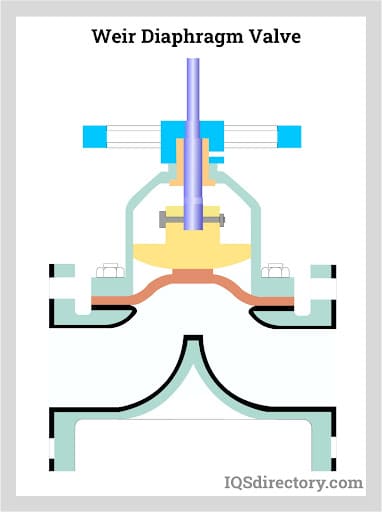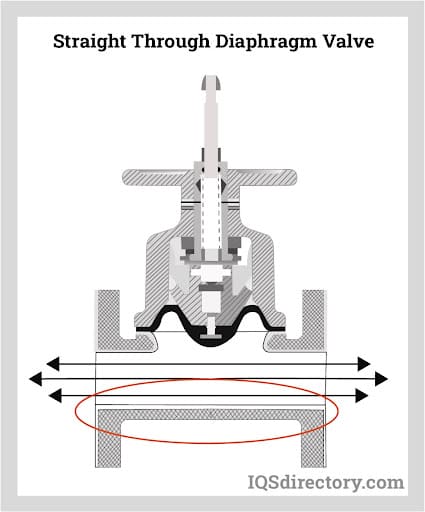Diaphragm Valves Information
A diaphragm valve is a type of valve that uses a diaphragm to control the flow of fluid. It is often used in systems where there is a requirement for both on/off and throttling control. It’s parts include the body, bonnet, diaphragm, and actuator. The diaphragm valve is popular in many industries due to its excellent control ability over aggressive media, gaseous fluids, and semi-solid media. They stand out with other valves as they are much simple and easy to assemble with many customization that can be applied and product range to fit any requirement of usage.
It has been around for decades and it first became a solution to control the flow in the Mining Industry. Today diaphragm valves are widely used in food and pharmaceutical manufacturing, water treatment, sewage pipelines and treatment plants, electronics manufacturing, and pulp and paper production.
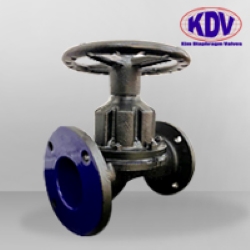
Diaphragm Valve and How it Works
Diaphragm valves use a flexible sheet pressed close to the edge of a solid dam to narrow the flow path for fluid. The other open edge of the Diaphragm Valve allows fluid to travel in through an intake port and out through an outlet port. It also operates on a pressure-differential principle and can allow continuous flow while being able to throttle flow through the device.
These valves are designed to be self-acting, which means flow through the Diaphragm Valve is controlled by the diaphragm itself. Diaphragms are typically made from rubber or silicone controlled by several control mechanisms depending on the application they are being used for. By using adjustable seats and valves it is possible to modify where pressure is required across diaphragms surface.
Diaphragm valves are typically used in batch-type applications, but they may also be used for continuous flow with low-pressure gradients, and on non-freezing liquid pipelines where process fluids will never solidify.
Diaphragm Valve Control and Functions
The diaphragm valve uses mechanical means acting on the diaphragm to move between open or close the valve. The diaphragm valve can be used as both an isolation and a control valve. The basic design of a diaphragm valve means it is hermetically sealed separating the process media / fluid from the bonnet, stem and actuation. The diaphragm, which is made from either Polymere or various rubber elastomer grades provides a leak-tight seal between the body and bonnet of the diaphragm valve.
It works by actuating a diaphragm that is placed between a chamber containing the valve stem and another chamber holding pressure from the process media. The diaphragm valve can be controlled in two ways- manually or remotely. Manual control is when the operator uses a handwheel to open and close the valve. The remote control is when an external device, such as a PLC (programmable logic controller) or DCS (distributed control system), sends a signal to the actuator to open or close the valve.
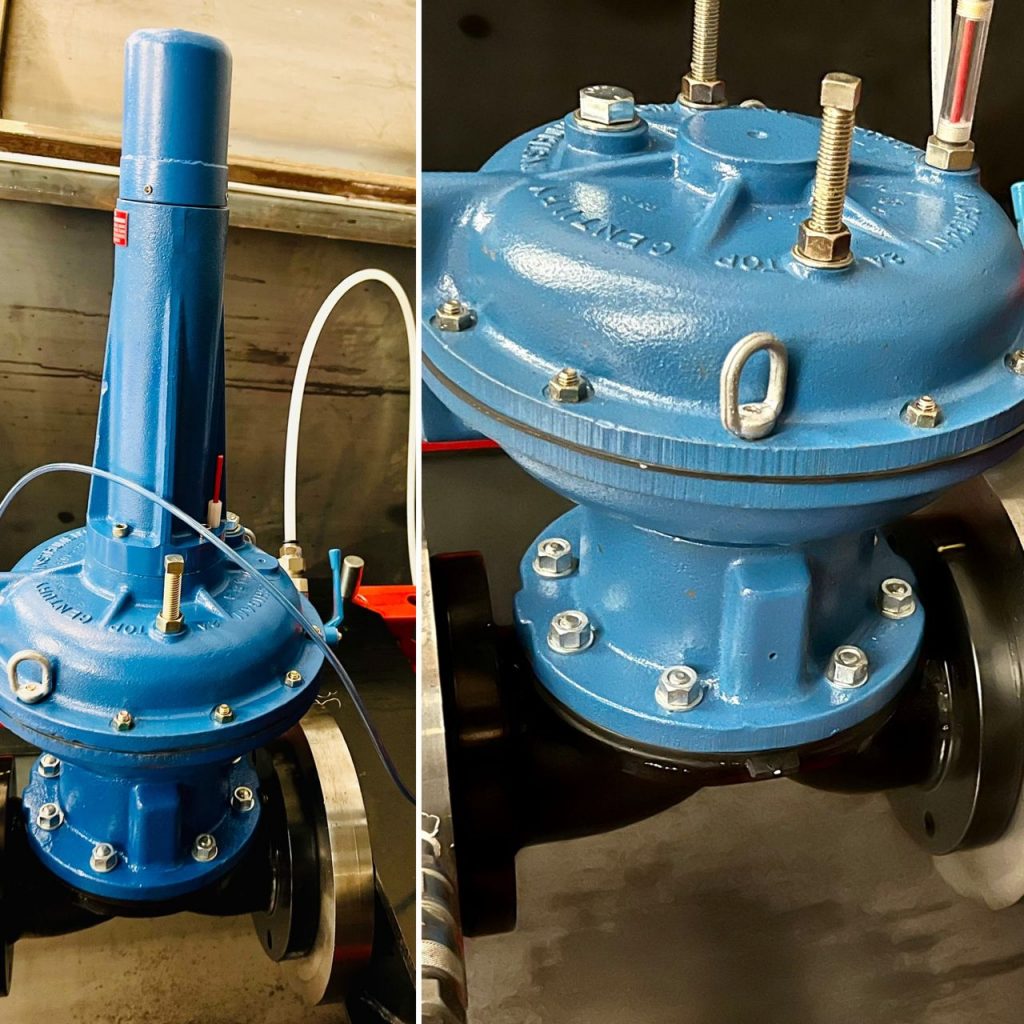
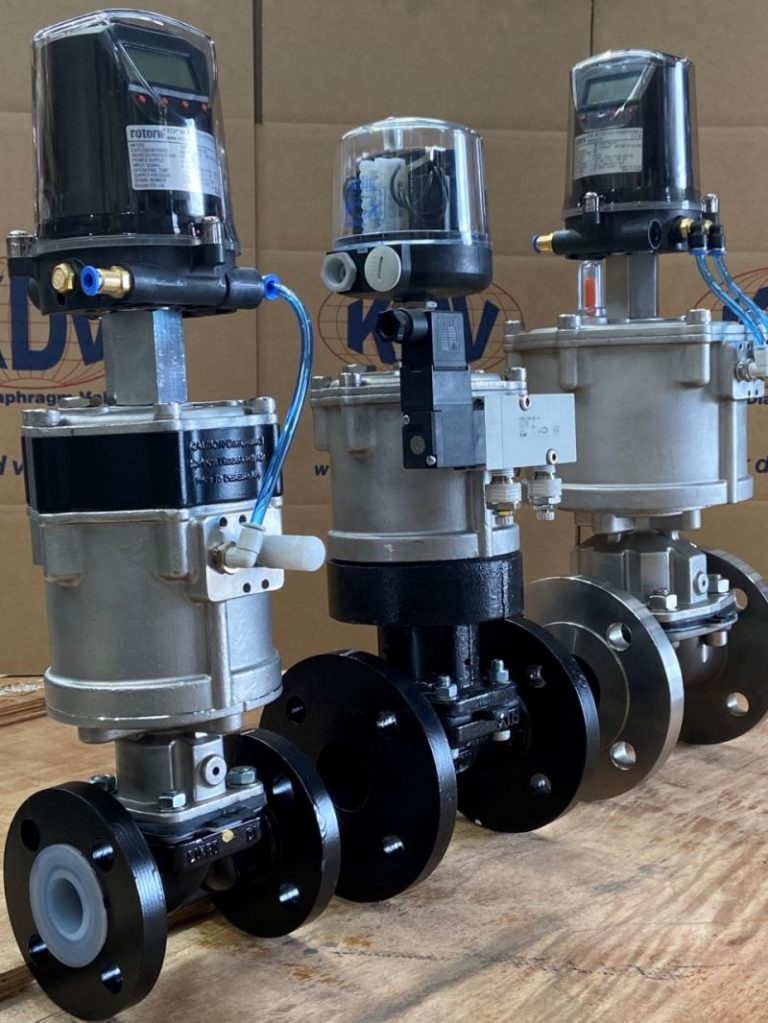
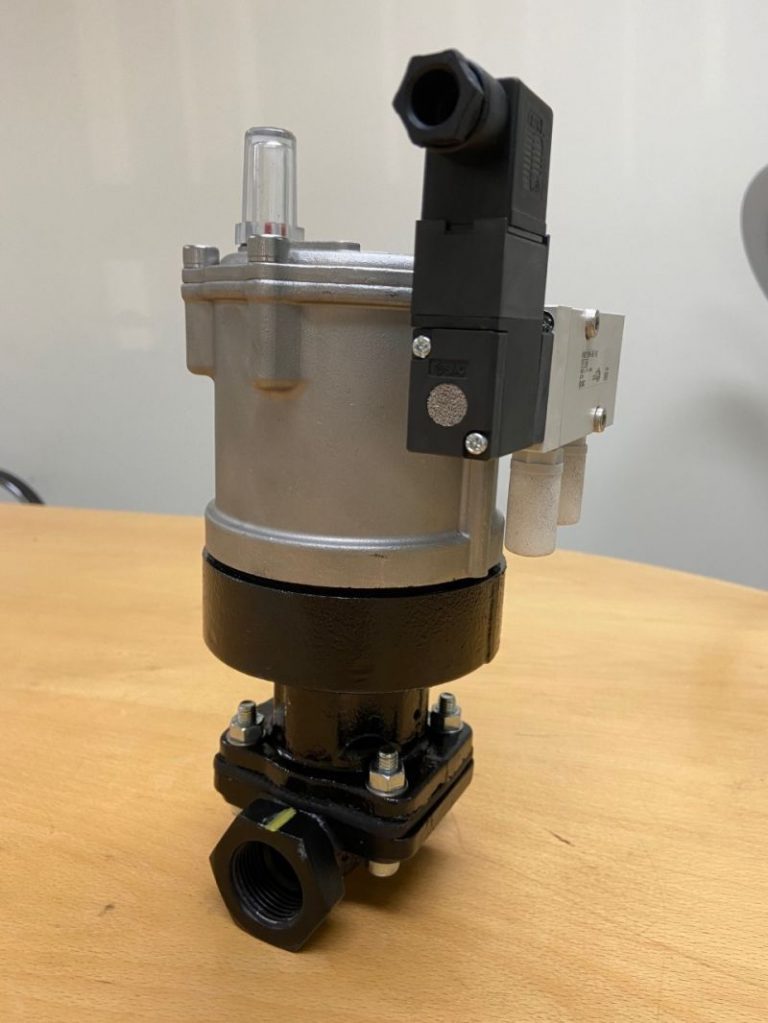

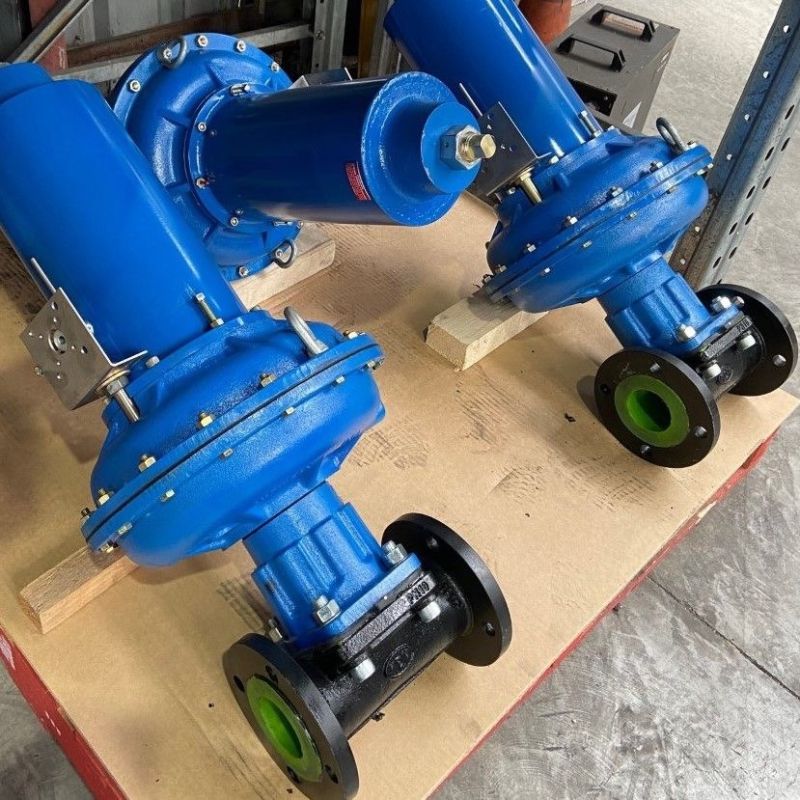
Diaphragm Valve Types
There are many diaphragm valve types, available in two basic body forms: weir type and straight through types. The assembly and operation of these diaphragm valves are both the same but their internal design differs and their primary process media usage varies significantly.
Weir pattern diaphragm valves are used for Isolation, throttling and flow control generally of fluids with minimal solids and generally can handle higher operating pressures, whilst straight pattern diaphragm valves are designed for isolation and flow control applications. Straight through type has a lower operating pressure rating than the weir diaphragm valve and can be used on process flow media that has much higher solid content and greater fluid viscosity or where unrestricted bore / flow is required.
A weir diaphragm valve design
The Weir Type diaphragm valve has a weir that is machined into the face of the valve seat. The upstream side of the weir is always higher than the downstream side. As liquid flows across the weir, it creates a meniscus that traps air and gas in the valve. This design helps to minimize cavitation and noise levels. Its best for throttling applications and has a higher flow coefficient. It is also used for backpressure control and can be installed in any position.
Materials that are typically used for diaphragms include neoprene, silicone, EPDM (ethylene propylene diene monomer), and FKM (fluorocarbon rubber). Each material has a different level of performance with temperature and chemical resistance.
The Straight-Through type
The straight through diaphragm valve design can be used in applications where the flow direction changes within the system. As the name implies, it’s a simple design that doesn’t have any restrictions and is used for applications where an on/off or control function is needed.
Diaphragm Valve Parts
There are many diaphragm valve types, available in two basic body forms: weir type and straight through types. The assembly and operation of these diaphragm valves are both the same but their internal design differs and their primary process media usage varies significantly.
Bonnets
Body Linings
Diaphragms – Weir Type / Straight through Type
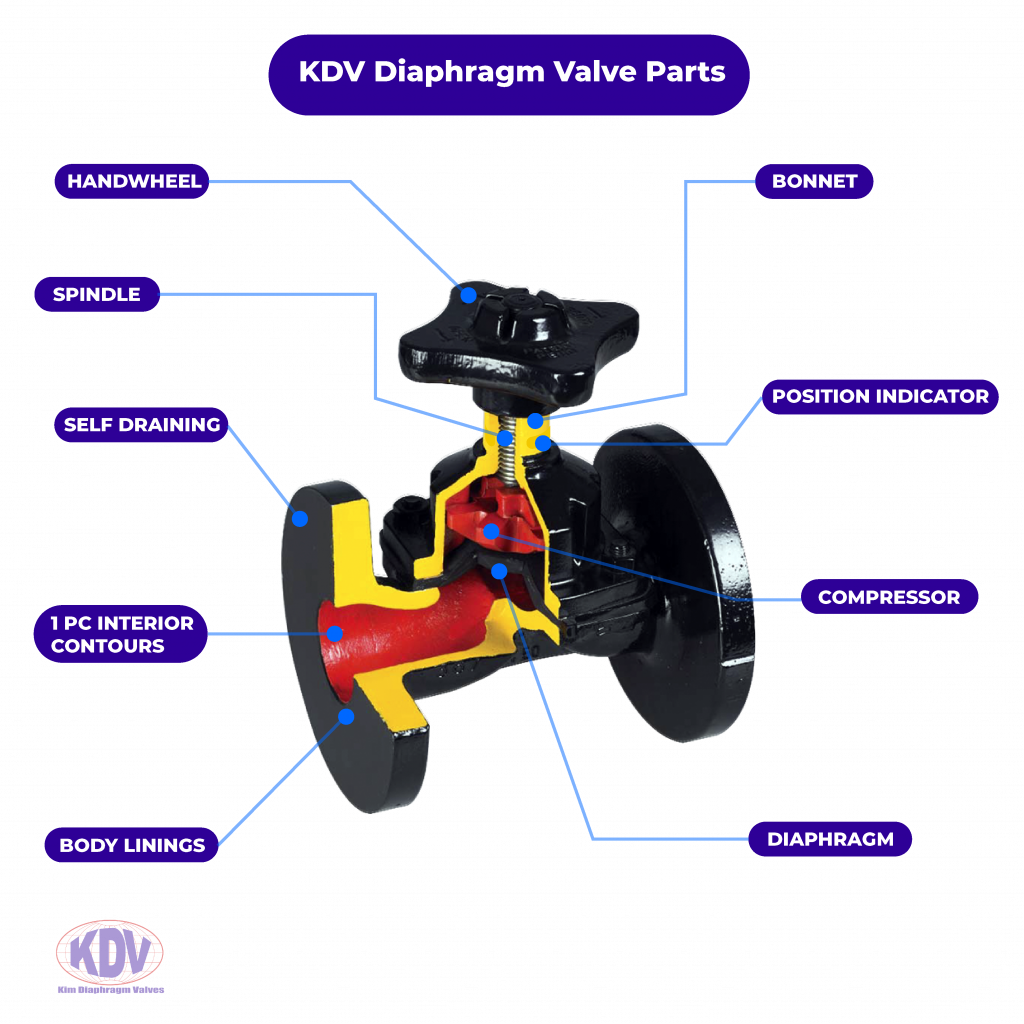
Compressor
The compressor is placed above the diaphragm and beneath the handwheel stem.
Advantage of using a Diaphragm Valve
Some advantages of using diaphragm valves are that the valve components can be isolated from the process fluid, require little torque to fully close them since they utilize balanced pressure on both sides of the diaphragm rather than the pressure created by an actuator like conventional valves do. Similarly, this construction helps prevent leakage of the fluid without the use of a gland seal (packing) as seen in other types of valves.
The valves are primarily used for isolation and control of high pressure and /or high-temperature services involving corrosive fluids.
In addition they provide a positive shut off when necessary, allowing for accurate measurement and isolation at pressures up to 5,000 psi or 3600 bar. Diaphragm valves have been widely used by many industries such as petrochemical, pharmaceutical, food processing, water and wastewater etc.
The only disadvantage from using diaphragm valves is that due to the use of diaphragm, pressure drops across this type of valve are larger than conventional valves. However, considering the different applications they have been used for, this disadvantage does not have a big impact on their overall performance. Diaphragm valves are easy to operate compared to other conventional valves and therefore reduce maintenance costs.
Resources:
- https://www.iqsdirectory.com/articles/diaphragm-valve.html
- http://sabadejlah.com/diaphragm-valves/https://instrumentationtools.com/diaphragm-valves/
- https://instrumentationtools.com/diaphragm-valves-construction-types-stem-bonnet-assembly/
- https://kdvflow.com/info-diaphragm-valves-parts/
- https://en.wikipedia.org/wiki/Diaphragm_valve
